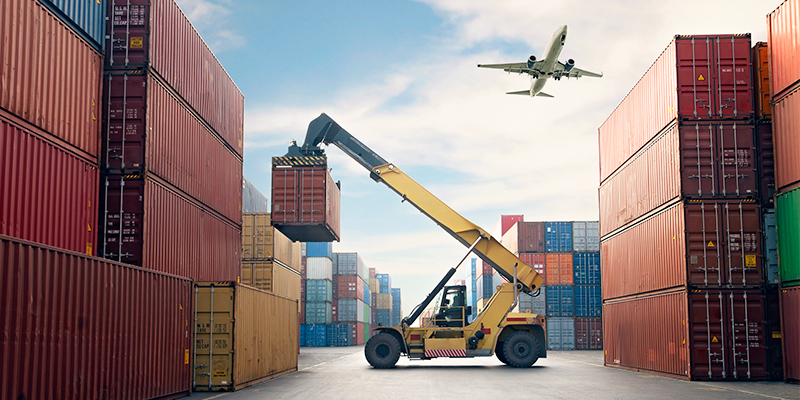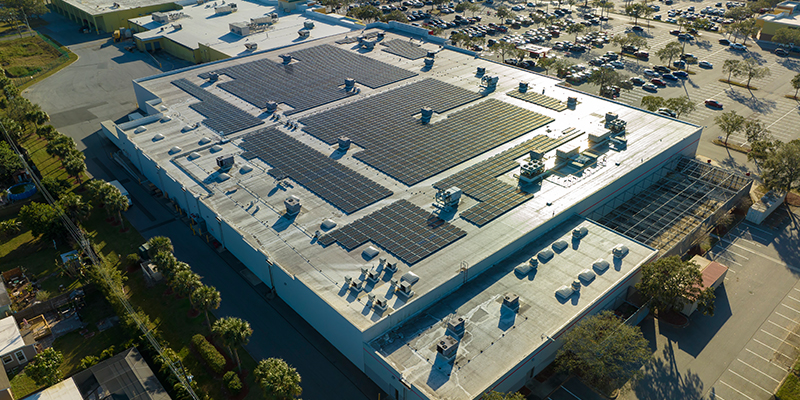The pandemic has brought the workings of the global supply chain into prominent focus, with the average consumer much more aware that a system they thought was smooth sailing had now hit some inconvenient and expensive rocky shoals. In a session at I.CON East: The Industrial Conference, experts shared their perspectives on what created a global supply chainwreck and looked ahead to what’s next.
The Global Supply Chain Now
“We’re seeing a de-centralization of China’s globalization,” said panel moderator Curtis Spencer, president, IMS Worldwide, Inc. “If you look at the numbers on the ports – they’re not slowing down – and they’re coming from Asia, just not necessarily China.”
How the COVID-19 pandemic impacted the supply chain:
- $4 trillion in new demand for goods.
- 17% decrease in terminal truck trips – no labor!
- 20% decrease in labor resources on terminal.
- 60% decrease of air cargo network.
Right now, consumer demand is switching focus from goods and services to services only. Consumers are directing their discretionary spending toward vacations and experiences after years of staying home and shopping extensively online.
“The next disruptor is going to be global e-commerce,” Spencer said, noting that the U.S. is the biggest e-commerce marketplace.
From 2020 to 2022, it cost almost five times as much to ship containers from Shanghai to North American ports. It typically takes about two weeks to bring cargo from China to the West Coast and four weeks to bring it to the East Coast.
The Bustling Port of Savannah, Georgia
After the ports of L.A./Long Beach and New York and New Jersey, the next biggest container port in the U.S. is the Port of Savannah. This port is the closest and fastest by rail to the major population centers of Atlanta; Birmingham, Alabama; Charlotte, North Carolina; Memphis, Tennessee; and Orlando, Florida.
The Port of Savannah has space to grow – space constraints prevent the two biggest U.S. ports from doing the same – which has been a big factor in the 6.6% growth from 2006 to 2021. It is also a terminal operator, not a landlord port authority like the two largest U.S. ports.
“When we were preparing for this panel, we only had a handful of ships across the coast of Savannah. This morning, we have 25 ships waiting five or six days to get into the port,” said Tom Wyville, regional manager, Georgia Ports Authority. The port is handling a high volume of traffic along with additional ships that were diverted from the West Coast ports.
“Now we have all this volume coming in, what do we do with it?” Wyville asked. The port must get the boxes off the terminal quickly so that they don’t overflow with equipment on the terminal. “This morning we had 82,000 units on the terminal; that is about 20,000 more than our comfort level,” he said.
The port has implemented a supply chain relief program that will provide a future network of pop-up container yards to facilitate movement through the port. “We’re spending $2.2 billion over the next 10 years with port expansion,” Wyville said.
Crunching the Numbers on Vacancy and Rent
Industrial space that is vacant right now is typically older, smaller and probably doesn’t have huge clear heights, according to Ben Harris, CSCP, senior managing director, client solutions and strategy, logistics & industrial services, Americas, Cushman & Wakefield.
Whereas previously the emphasis was on predictability, supply chain flexibility has become the number one thing, Harris said.
Customers are trying to figure out “how to play this new game” and how to address consumer demand, according to Dave Tuttle, vice president, supply chain research, Link Logistics Real Estate. They’re trying to figure out how to solve problems now and how to prepare for what’s coming next. This is a time ripe for innovation, new technology and adaptability.
The Rising Tide of Port Traffic
Increased port traffic on the West Coast affects the East Coast as well. Curtis mentioned the recent news that Norfolk Southern and Union Pacific Corporation are partnering on an express service aimed at helping shippers reach West Coast markets from the East Coast. The service will originate at the Norfolk International Terminal at the Port of Virginia; traffic will flow through Chicago with Union Pacific; then make connections to West Coast markets.
“Every time we have had one of these shifts to the East Coast, only about 80-85% of it goes back [over time]; the rest stays there,” which still consists of significant numbers, said Wyville. The increased traffic puts pressure on the entire infrastructure – from the ports to the warehouses to the truckers to the rail providers – in handling this higher volume.
This post is brought to you by JLL, the social media and conference blog sponsor of NAIOP’s I.CON East 2022. Learn more about JLL at www.us.jll.com or www.jll.ca.









